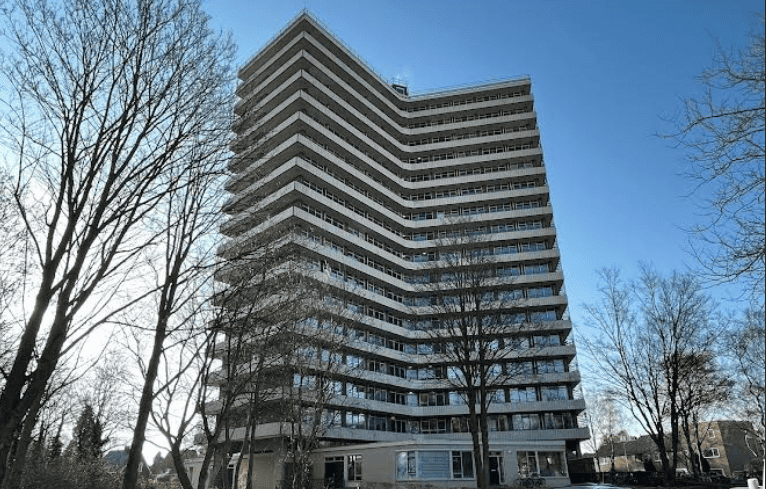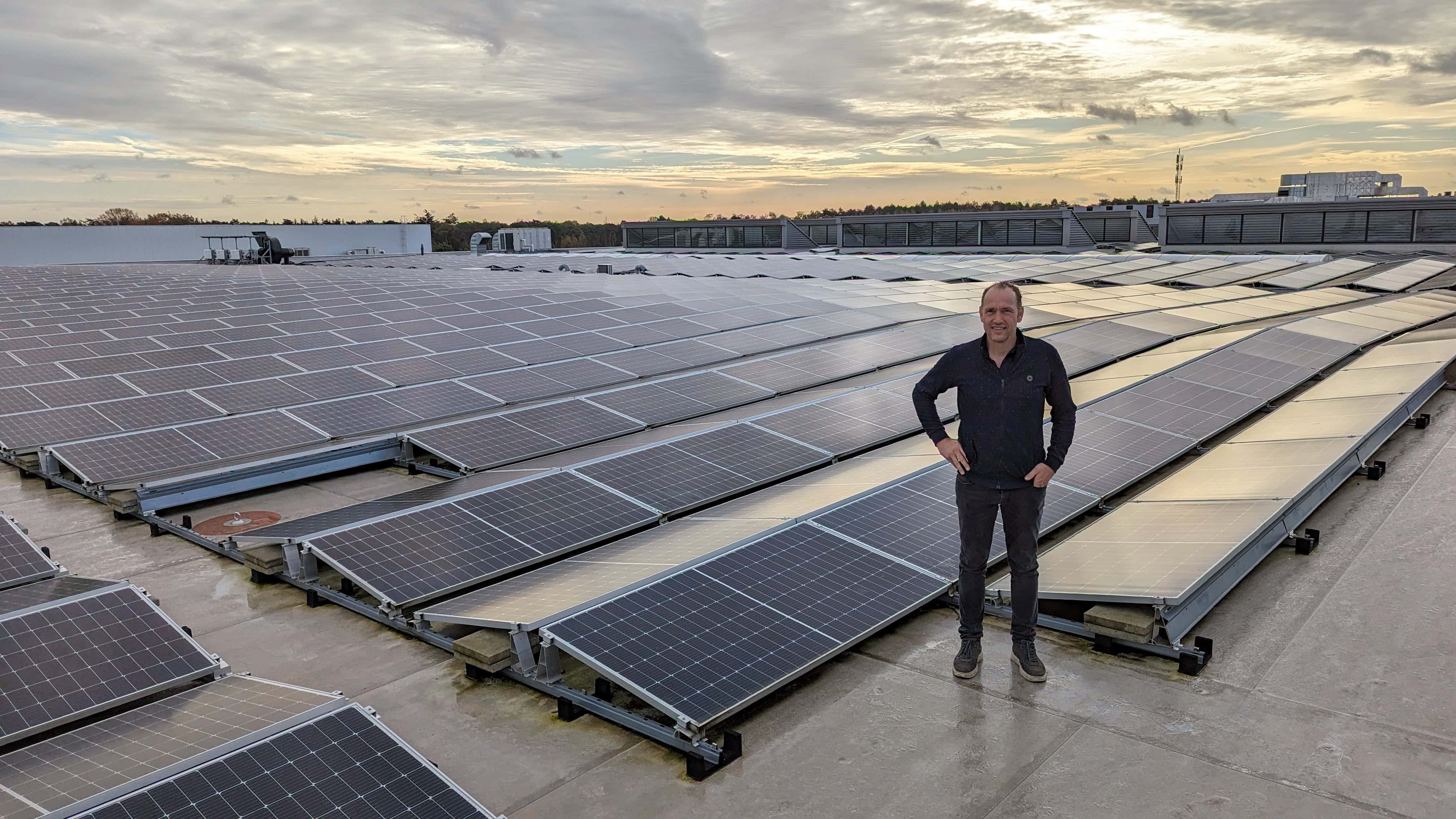
Grid congestion – meaning the power grid is so full that congestion occurs – hits every new industrial park, every desired business expansion and even housing projects are at risk. The consequences are felt on two sides: no electricity is available at the times you need it, but a feed-in of self-generated energy is no longer possible.
Why you need to know
Grid congestion is an increasingly common problem, especially for growing businesses. Voltgoed has built a system that, based on long-term planning, can counter it.
The problem is finally on the minds of governments and grid operators. With the help of parties such as Enexis and Liander, Dutch local energy hubs that can solve grid congestion for specific business parks have emerged. They seem like drops in a bucket, but thanks to the pilots here and there in the country, so much expertise has emerged that the drops are less likely to evaporate. Still, more is needed than the cooperation of the grid operator, for they, too, are dependent on a higher power: TenneT’s high-voltage grid. In short, not only patience and perseverance are needed, but also a great deal of creativity. And very tight planning.
Voltgoed has built up a lot of experience with this challenge. The start-up at the High Tech Campus Eindhoven has developed a way to support building owners in making their heating needs more sustainable. They do that from start to finish, says co-founder Horst Fietje. “That’s exactly where the difference lies with how others approach it. Instead of just giving good advice, we guide a building owner from the ideation phase to operation when everything is ready.”
Network
That sounds logical but at the same time, enormously complicated. Isn’t Voltgoed – with six internal employees also limited in capacity – taking on too much? Fietje doesn’t think so. “We can guarantee that thanks to our network of partners. We can do the phases of feasibility studies and energy system development largely on our own. For realization, we work with specialized installation companies that can build the heat system. Of course, we remain closely connected to ensure the system is realized according to the design. In this way, we can guarantee energy performance during operation.”
In addition to tight planning, it is also important to look far ahead, says Fietje. “What you often see now is rather arbitrary solutions that seem to help in the short term. So a building owner who wants to get rid of the gas will look at what insulation will do, what it will mean if a heat pump is combined with that, and so on. That’s all not wrong, but by approaching all that more or less manually from the current possibilities, you often don’t choose the best combination of measures for the long term. That is why we work with a data-driven computing core that calculates all possible scenarios and thus looks much further ahead.”

Sterflat in Wageningen
The year 2050 is, not coincidentally, the benchmark here. After all, by that year, according to the Paris climate goals, we must have built a completely CO2-neutral existence. “Because of the current grid congestion, you can’t just think in the ‘now.’ So, we are establishing an energy system that can grow with the needs and possibilities over the years. For example, we are doing that now for the large Sterflat (“Star Flat”) in Wageningen, with 400 homes equipped with block heating, using natural gas. The flat has to be taken off the gas, and the housing corporation wants a higher energy label, but in doing so, they run into capacity problems for the electricity grid. That means they can’t switch to a collective heat pump all at once. We made a plan for the project that starts with insulation measures and a hybrid heat pump setup. So, they will still partially use natural gas for the next few years, but the building interventions are already prepared for all-electric. In nine years, when grid operator TenneT is expected to have space on the electricity grid again, we can take the next steps – we have pre-sorted for that in the years before.”

A second crucial point that Voltgoed has built in is a finance scheme. By taking advantage of available subsidies and financing offered, for example, through the Energiefonds Brabant and the Brabantse Ontwikkelings Maatschappij (BOM), Voltgoed can invest in making the heat plant more sustainable. “We calculate the Total Cost of Ownership over the entire period until 2050 and beyond. We quantify how beneficial it is to take certain sustainability steps. For this purpose, we work with Ovvia, one of Jan van Hout’s companies in Veldhoven. It connects to the awareness of many building owners that energy prices continue to rise, but the threshold to invest is still large. We can show with Ovvia that such an investment does pay off. If desired, we can also cover the necessary investments in sustainability. This way, the building owner has lower energy costs, a better energy label, and the property becomes more valuable.”

From new construction to united owners
This works not only for investors, housing associations or large new construction projects, but also for an Owners’ Association. “Suppose there is an owners’ association that says, okay, we have to become more sustainable. We want to get rid of the gas, but we can’t pay for it ourselves. We haven’t saved enough for that in the long-term maintenance budget. Then Voltgoed can finance it. We make sure that such an association can get off the gas now, and in return, we get a certain compensation until 2050.” This takes the form of a monthly energy tariff, consisting of a part fixed fee and a variable tariff so that less energy consumption is also rewarded. “This does allow you to take that step now without having to face the total cost right away.”
Whether it is a small owners’ association or a large area development, Voltgoed aims to be in charge from start to finish. From the feasibility study, including financing issues, to the operation. The big challenge for the coming years will be scalability. For however large the steps of preliminary study, development, and realization may seem, they are, in principle, one-off and manageable. That is much less true of operation. That is a business in itself. Fietje: “Indeed, we supply the energy, we maintain the energy system, we meter the consumption, we bill, do customer service and everything else.”
Fietje doesn’t have any concerns about the feasibility of that phase. He has confidence not only in Voltgoed’s performance but also in that of its partners and network. “All necessary processes are well aligned and tested in practice, such as the in-house monitoring platform developed with the support of Metropoolregio Eindhoven subsidy. And what’s more: the first projects have already been realized and delivered.”

